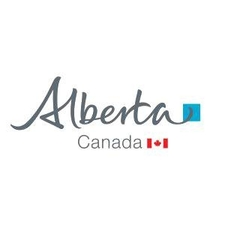RI_532
Type of resources
Available actions
Topics
Keywords
Contact for the resource
Provided by
Formats
Representation types
Update frequencies
status
-

The Geological Atlas of the Western Canada Sedimentary Basin was designed primarily as a reference volume documenting the subsurface geology of the Western Canada Sedimentary Basin. This GIS dataset is one of a collection of shapefiles representing part of Chapter 7 of the Atlas, Paleographic Evolution of the Cratonic Platform - Cambrian to Triassic, Figure 5, Ordovician (OS3) Paleogeography. Shapefiles were produced from archived digital files created by the Alberta Geological Survey in the mid-1990s, and edited in 2005-06 to correct, attribute and consolidate the data into single files by feature type and by figure.
-

The Geological Atlas of the Western Canada Sedimentary Basin was designed primarily as a reference volume documenting the subsurface geology of the Western Canada Sedimentary Basin. This GIS dataset is one of a collection of shapefiles representing part of Chapter 8 of the Atlas, Middle Cambrian to Lower Ordovician Strata of the Western Canada Sedimentary Basin, Figure 21a, Upper Cambrian - Lower Ordovician Lithology Sandstone. Shapefiles were produced from archived digital files created by the Alberta Geological Survey in the mid-1990s, and edited in 2005-06 to correct, attribute and consolidate the data into single files by feature type and by figure.
-

The Geological Atlas of the Western Canada Sedimentary Basin was designed primarily as a reference volume documenting the subsurface geology of the Western Canada Sedimentary Basin. This GIS dataset is one of a collection of shapefiles representing part of Chapter 7 of the Atlas, Paleographic Evolution of the Cratonic Platform - Cambrian to Triassic, Figure 2, Cambrian Paleogeography. Shapefiles were produced from archived digital files created by the Alberta Geological Survey in the mid-1990s, and edited in 2005-06 to correct, attribute and consolidate the data into single files by feature type and by figure.
-

The Geological Atlas of the Western Canada Sedimentary Basin was designed primarily as a reference volume documenting the subsurface geology of the Western Canada Sedimentary Basin. This GIS dataset is one of a collection of shapefiles representing part of Chapter 17 of the Atlas, Paleographic Evolution of the Western Canada Foreland Basin, Figure 3, Cadomin/Gething/Ellerslie/Dina Paleogeography. Shapefiles were produced from archived digital files created by the Alberta Geological Survey in the mid-1990s, and edited in 2005-06 to correct, attribute and consolidate the data into single files by feature type and by figure.
-

The Geological Atlas of the Western Canada Sedimentary Basin was designed primarily as a reference volume documenting the subsurface geology of the Western Canada Sedimentary Basin. This GIS dataset is one of a collection of shapefiles representing part of Chapter 7 of the Atlas, Paleographic Evolution of the Cratonic Platform - Cambrian to Triassic, Figure 14, Triassic (PT2) Paleogeography. Shapefiles were produced from archived digital files created by the Alberta Geological Survey in the mid-1990s, and edited in 2005-06 to correct, attribute and consolidate the data into single files by feature type and by figure.
-

The Geological Atlas of the Western Canada Sedimentary Basin was designed primarily as a reference volume documenting the subsurface geology of the Western Canada Sedimentary Basin. This GIS dataset is one of a collection of shapefiles representing part of Chapter 5 of the Atlas, Precambrian Basement Beneath the Western Canada Sedimentary Basin, Figure 1, Precambrian Structure. Shapefiles were produced from archived digital files created by the Alberta Geological Survey in the mid-1990s, and edited in 2005-06 to correct, attribute and consolidate the data into single files by feature type and by figure.
-

The Geological Atlas of the Western Canada Sedimentary Basin was designed primarily as a reference volume documenting the subsurface geology of the Western Canada Sedimentary Basin. This GIS dataset is one of a collection of shapefiles representing part of Chapter 14 of the Atlas, Carboniferous Strata of the Western Canada Sedimentary Basin, Figure 35, Stoddart/Mattson/Kibbey Isopach and Lithofacies. Shapefiles were produced from archived digital files created by the Alberta Geological Survey in the mid-1990s, and edited in 2005-06 to correct, attribute and consolidate the data into single files by feature type and by figure.
-

The Geological Atlas of the Western Canada Sedimentary Basin was designed primarily as a reference volume documenting the subsurface geology of the Western Canada Sedimentary Basin. This GIS dataset is one of a collection of shapefiles representing part of Chapter 17 of the Atlas, Paleographic Evolution of the Western Canada Foreland Basin, Figure 14, Horseshoe Canyon/Scollard/Paskapoo/Ravenscrag Paleogeography. Shapefiles were produced from archived digital files created by the Alberta Geological Survey in the mid-1990s, and edited in 2005-06 to correct, attribute and consolidate the data into single files by feature type and by figure.
-

The Geological Atlas of the Western Canada Sedimentary Basin was designed primarily as a reference volume documenting the subsurface geology of the Western Canada Sedimentary Basin. This GIS dataset is one of a collection of shapefiles representing part of Chapter 19 of the Atlas, Cretaceous Mannville Group of the Western Canada Sedimentary Basin, Figure 4, Mannville Isopach. Shapefiles were produced from archived digital files created by the Alberta Geological Survey in the mid-1990s, and edited in 2005-06 to correct, attribute and consolidate the data into single files by feature type and by figure.
-

The Geological Atlas of the Western Canada Sedimentary Basin was designed primarily as a reference volume documenting the subsurface geology of the Western Canada Sedimentary Basin. This GIS dataset is one of a collection of shapefiles representing part of Chapter 17 of the Atlas, Paleographic Evolution of the Western Canada Foreland Basin, Figure 13, Belly River (and Equivalents) Paleogeography. Shapefiles were produced from archived digital files created by the Alberta Geological Survey in the mid-1990s, and edited in 2005-06 to correct, attribute and consolidate the data into single files by feature type and by figure.
 Arctic SDI catalogue
Arctic SDI catalogue